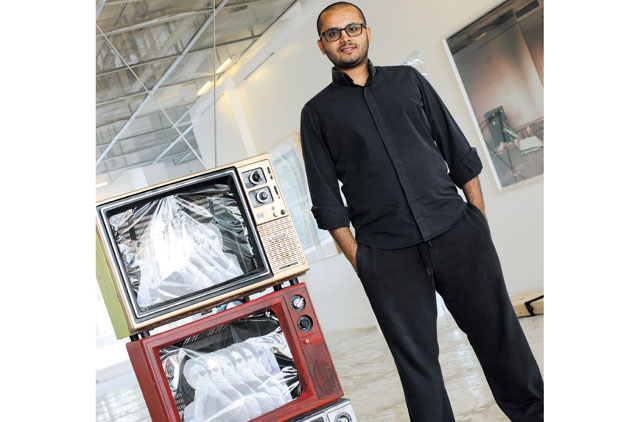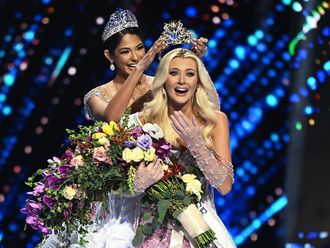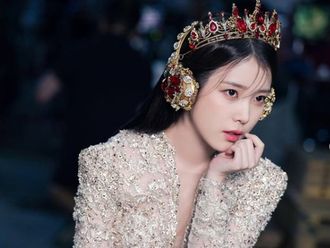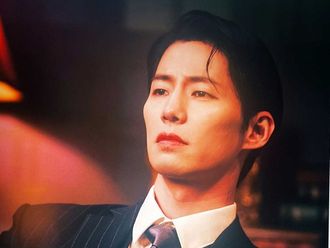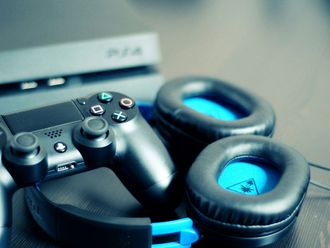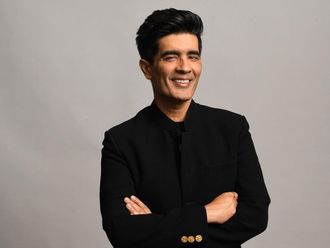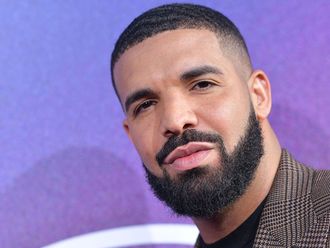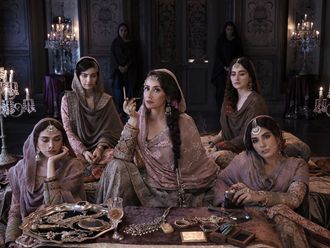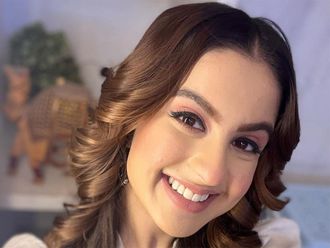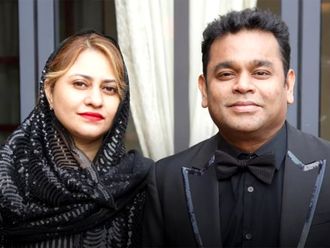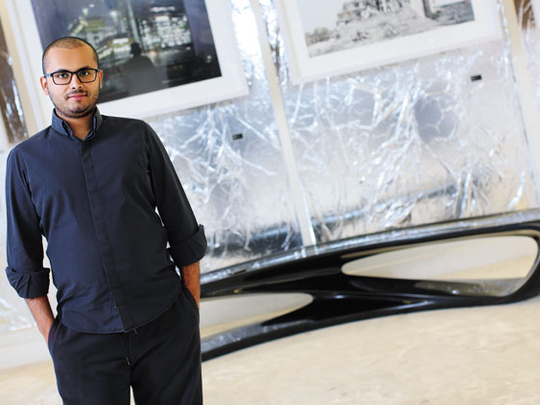
Stepping inside Traffic design gallery, we are greeted by a wall of graffiti created by Dubai-based artist Ubik, bare concrete floors, an assortment of installation art and designer furniture. Most of the full-length glass windows looking out onto the street are paperedover with aluminium foil, perhaps to stop the sun from fading the Zaha Hadid-designed Aqua table.
Rami Farook joins us for a brief moment, assures us he will be with us soon, and disappears once again into the bowels of the studio. We go back to admiring the works of photographer Cédric Delsauxon the walls. His digital pictures superimpose Star Wars characters on various settings in Dubai - the burnt-out shell of the Al Nasr cinema, the DIFCGate and a construction site.
Rami Farook returns and we chat before his eclectic and intensely personal collection of art. "I've always loved the dialogue between art and design," he says by way of introductory remarks. "The essence of design is that form follows function, whereas in art, form is the function. They complement each other."
For this 29-year-old Emirati fatherof two, becoming an art collector and design entrepreneur wasn't a natural progression of events. He grew up inDubai, interested in music and fashion,and received an education that was "a mixture of marketing management, psychology and Islamic studies".
The interest in design was ignitedin the United States where he went for further studies.
Farook recalls a Jackson Pollock-esque moment in his student life, when he threw melted candle wax on the floor to create patterns and created wall art froma collection of CDs. "I guess that was my earliest dabbling in design. Around the late Nineties I came across a lot of artists who sold their works for $20 to $30. I would randomly pick up pieces."
On returning to Dubai, Rami worked in his family-owned business and found himself naturally gravitating towards design. He started off designing stationery and marketing collateral, but his life was about to change.
"In January 2007, I was in London's Serpentine Gallery at a show curated by Damien Hirst from his own collection.I was inspired, shocked, motivated. WhenI came back, it was also the first year of Art Dubai. I had become a serious art collector."
Traffic was created by the end of the year. Rami saw it as a place where he could exhibit and sell design. It quickly expanded into a bigger force.
"I get bored very quickly - it'sa weakness but also a strength in that it pushes me to explore something new. Six months after opening Traffic, I decided to start a division for projects, to start furnishing offices, lobbies and cafés."
Traffic became Dubai's first design studio that also had an artist-in-residence, James Clar, furniture designers, interior architects and space for exhibitions. They also bagged some notable commissions: The Rolex tower on Shaikh Zayed Road and the lobby of the Burj Khalifa.
Traffic's latest design flourish, a line of furniture named Local, grew out of the studio. They were designing spaces but couldn't find furniture that resonated with the design intent. Local was launched this April, in the middle of the buzzing Via Savona in Milan, at the heart of Zona Tortona. The venue was a car workshop which was left untouched for the launch, and standing beside heavy machinery, motors and tools were the whimsical pieces from Local: a bench with a seat made of lawn, a bookshelf with LED lights and Rami-designed Cheap and Best light. These are products that speak of Dubai, minus the pastiche and the bling.
What's next? "The Farook Foundation, which will have its own space, art collection and curated shows with artworks from our own collection. Within six months, another of our projects should have materialised. It's a collaboration between Traffic and Farook, our family business. It's going to be called Print - a contemporary stationery store with books and art supplies."
Rami recognises that Trafficneeds to be cultural and commercial. "As beautiful as it is to work as a non-commercial entity, it makes sense to be sustainable. The biggest impact the recession has had is on our inventory - we don't stock furniture any more but we currently 25 brands in portfolio, supplied on order. We've revised our whole retail strategy and are now more focused on online.
"Moving on we'd like to continue to grow the studio. I want us to design, books, websites, interior spaces and to continue with our projects like Local and Print. Traffic has also moved into art - we represent four artists now. For the next three years it's going to be a mix of art and design."
Rami keeps his creative juices flowing through travel - almost a week every month - to absorb art and culture. "I see museums and meet artists. In Dubai, I visit galleries for almost half a day, every week. Weekends are for the kids, I have two. Jude is 5 and Hamad is 3. Work and personal life are integrated - the people I work with are my friends."
Gesturing at the art that surrounds us he says, "The way I view art is that it has to speak to me at a personal level and in a social context. Next month I am curating a show in Berlin called Grey Borders, Grey Frontiers. It's a show with 13 Saudi artists and includes socio-political commentaries, and even a work on Obama.
"A lot of art is the most genuine way to discuss the state of the world today," Rami says. He points to the prominently displayed installation by Russian artist Andrei Molodkin - three dimensional letters spelling out Democracy and partiallyfilled with oil. "The Democracy piece isa sarcastic yet genuine way to discuss theoil-for-arms programme."
Looking at the art on display, I ask if he is a feminist. He laughs, saying "The second show I will be curating at the foundation is called, That's What She Said. Women are the subjects of the pieces by various artists. I love women, I don't know if I am a feminist but I am very happy that in our part of the world women are getting gratification, power and attention they deserve."
What's Local?
Local is a line of furniture, clothing and objects from the UAE with the collaboration of artists, architects and designers at its core. The idea of movement and collaboration is at the heart of the Local concept. The brand also sees designers and artists create products outside their usual medium of choice - for example, an architect has designed seating for the line while a media artist has designed products. Rami Farook, director of design studio Traffic, conceived Local with the goal of stimulating the design scene and economy of the UAE.
www.localandco.ae


